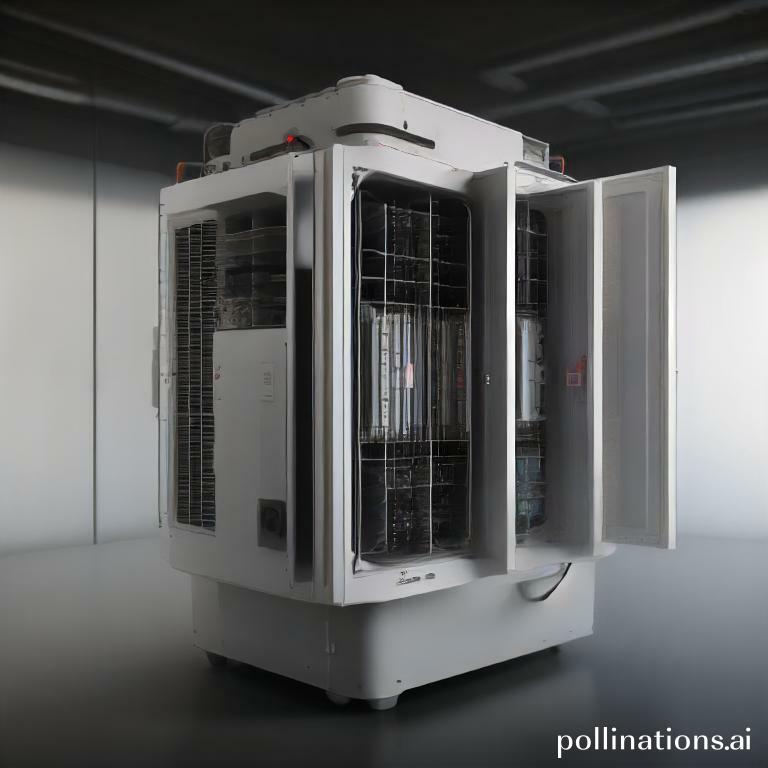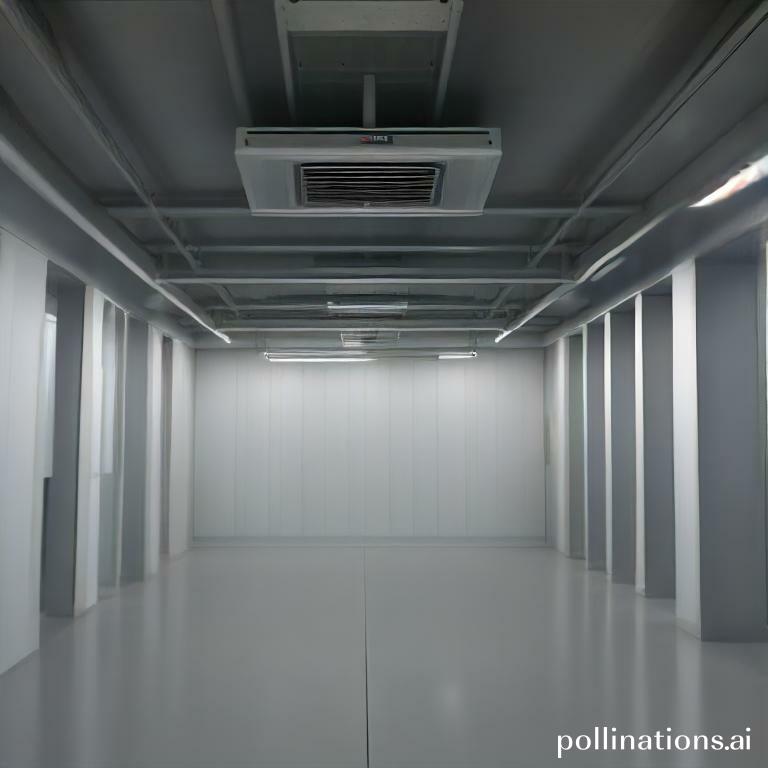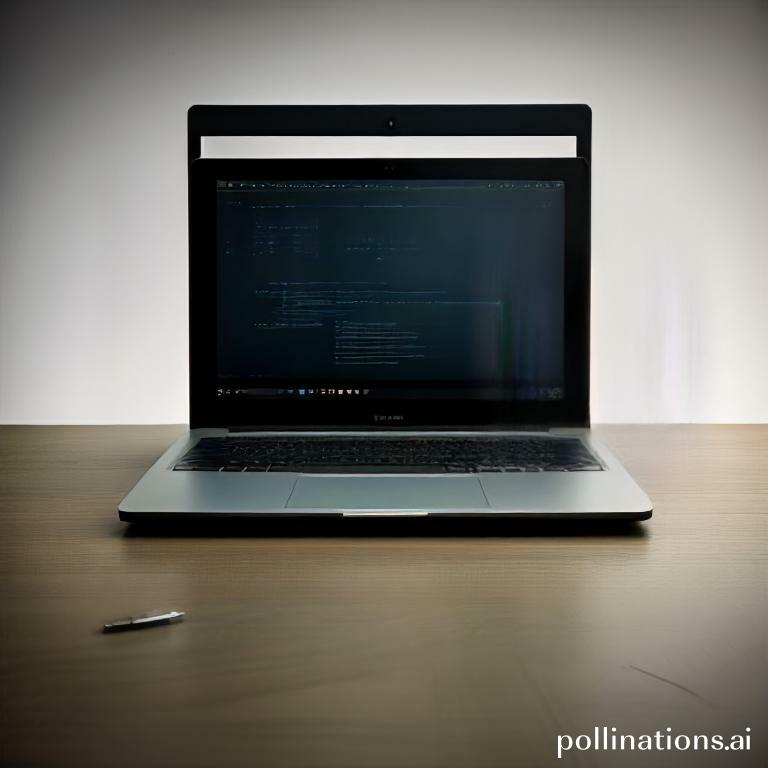
Check Out The Exclusive Deals Waiting For You! ∇
The Role of Standardization in Overcoming Interoperability Challenges
1. The Need for Industry-wide Standards in IoT HVAC Systems
In the rapidly evolving world of Internet of Things (IoT), HVAC systems play a crucial role in maintaining comfortable indoor environments. Despite this, the lack of industry-wide standards poses significant challenges in terms of interoperability. To address this issue, the adoption of standardized protocols and frameworks becomes imperative.
Standardization in IoT HVAC systems offers numerous benefits, including:
- Efficiency: By implementing standardized protocols, HVAC systems can communicate seamlessly with other smart devices, optimizing energy consumption and improving overall efficiency.
- Compatibility: Industry-wide standards ensure that different HVAC components from various manufacturers can work together harmoniously, eliminating compatibility issues and simplifying system integration.
- Scalability: With standardized protocols, it becomes easier to expand and upgrade IoT HVAC systems, as new devices can be seamlessly integrated into the existing infrastructure.
2. Benefits of Standardization in Ensuring Seamless Integration
Standardization plays a crucial role in ensuring seamless integration of IoT HVAC systems with other smart devices and platforms. Let’s ponder some of the key benefits:
- Interoperability: With standardized protocols, IoT HVAC systems can communicate and exchange data with other devices and platforms, enabling intelligent automation and centralized control.
- Enhanced User Experience: Standardization enables a user-friendly experience, as different devices can seamlessly interact, providing personalized comfort settings and energy optimization.
- Future-Proofing: By adhering to industry-wide standards, IoT HVAC systems are future-proofed against technological advancements and changes, ensuring compatibility with upcoming devices and platforms.
| Standardization Benefits | Description |
|---|---|
| Efficiency | Optimizes energy consumption and improves overall efficiency. |
| Compatibility | Enables harmonious integration of HVAC components from different manufacturers. |
| Scalability | Facilitates easy expansion and integration of new devices into existing systems. |
| Interoperability | Enables communication and data exchange with other devices and platforms. |
| Enhanced User Experience | Provides personalized comfort settings and energy optimization. |
| Future-Proofing | Ensures compatibility with upcoming devices and platforms. |
Addressing Communication Protocols in IoT HVAC Systems
In the realm of Internet of Things (IoT) technology, communication protocols play a crucial role in ensuring seamless connectivity and interoperability in HVAC systems. Apprehending the different communication protocols used in these systems is essential for HVAC professionals and enthusiasts alike.
Venturing Different Communication Protocols Used in HVAC Systems
As for HVAC systems, several communication protocols have emerged to facilitate efficient data exchange and control. One widely used protocol is BACnet, which stands for Building Automation and Control Networks. BACnet enables interoperability between various HVAC devices and allows for seamless integration with other building automation systems.
Another prominent communication protocol in HVAC systems is Modbus. Developed in the late 1970s, Modbus has become a standard for connecting industrial electronic devices. It is known for its simplicity and flexibility, making it a popular choice for HVAC systems.
LonWorks is yet another widely adopted protocol in the HVAC industry. It offers a versatile and robust communication infrastructure, allowing different devices to communicate effectively. LonWorks is known for its reliability and scalability, making it suitable for both small and large-scale HVAC applications.
Choosing the Right Protocol for Interoperability
When selecting a communication protocol for IoT HVAC systems, it is essential to consider factors such as compatibility, scalability, and reliability. Each protocol has its strengths and weaknesses, and choosing the right one depends on specific project requirements.
BACnet, with its extensive support for various HVAC devices, is an excellent choice for projects that require interoperability and integration with other building automation systems. Its widespread adoption also means a wealth of available resources and support.
Contrarily, Modbus may be a preferred option for smaller-scale HVAC applications that prioritize simplicity and cost-effectiveness. Its straightforward implementation and wide device support make it a practical choice for many HVAC professionals.
For those seeking a highly reliable and scalable solution, LonWorks offers a robust communication infrastructure that can handle complex HVAC systems. Its flexibility and extensive device compatibility make it a viable option for both residential and commercial projects.
| Communication Protocol | Advantages |
|---|---|
| BACnet | Interoperability, integration support |
| Modbus | Simplicity, cost-effectiveness |
| LonWorks | Reliability, scalability |
Resolving Data Integration Issues in IoT HVAC Systems
As the Internet of Things (IoT) continues to revolutionize various industries, one area that has greatly benefited from its advancements is the HVAC (Heating, Ventilation, and Air Conditioning) systems. Nonetheless, with the integration of multiple devices and sensors, data integration issues can arise, hindering the seamless operation of these systems. In this section, we will navigate effective strategies to resolve these challenges and ensure enhanced interoperability.
1. Integrating Data from Multiple Devices and Sensors
One of the primary challenges in IoT HVAC systems is the integration of data from various devices and sensors. With each device generating its own data, it becomes crucial to establish a seamless connection and consolidate the information for effective analysis and control. To address this, organizations can employ the following strategies:
- Data Aggregation: Utilize data aggregation techniques to collect and combine data from different devices and sensors, creating a unified dataset that can be easily analyzed and utilized for decision-making.
- Standardized Protocols: Implement standardized communication protocols, such as MQTT or CoAP, to ensure compatibility and seamless data exchange between different devices and sensors.
- Data Mapping: Develop a comprehensive data mapping strategy to establish a common language and structure for the data generated by different devices and sensors, facilitating efficient integration and analysis.
2. Data Management Strategies for Enhanced Interoperability
In addition to integrating data from multiple devices and sensors, effective data management strategies play a crucial role in ensuring enhanced interoperability within IoT HVAC systems. The following approaches can be employed:
- Data Quality Assurance: Implement robust data quality assurance mechanisms to ensure the accuracy, reliability, and consistency of the data collected from different devices and sensors.
- Data Security: Prioritize data security measures, including encryption and access control, to protect the integrity and confidentiality of the data exchanged between devices and sensors.
- Data Analytics: Leverage advanced data analytics techniques, such as machine learning algorithms, to extract valuable insights from the integrated data, enabling predictive maintenance and optimized system performance.

Overcoming Hardware and Software Compatibility Challenges
1. Compatibility Considerations in IoT HVAC Systems
In the realm of Internet of Things (IoT), HVAC systems play a crucial role in creating optimal indoor environments. Conversely, ensuring compatibility between hardware and software components is vital for the efficient operation of these systems.
1.1 Hardware Compatibility
As for IoT HVAC systems, hardware compatibility refers to the ability of various devices and sensors to seamlessly communicate and interact with each other. For instance, temperature sensors should be compatible with the central control unit to provide accurate readings and enable efficient temperature regulation.
1.2 Software Compatibility
Software compatibility, whilst, focuses on the compatibility of the software applications and programs used in IoT HVAC systems. This includes ensuring that the software can effectively process data from different sensors, analyze it, and make appropriate adjustments to the HVAC system.
2. Ensuring Smooth Integration of Hardware and Software Components
Integration of hardware and software components is crucial to achieve a seamless functioning IoT HVAC system. Here are some key considerations to ensure smooth integration:
2.1 Interoperability
Interoperability is the ability of different devices, systems, or software to work together without any compatibility issues. In the context of IoT HVAC systems, it involves selecting hardware and software components that are designed to be interoperable, allowing for easy integration.
2.2 Standardization
Standardization plays a vital role in ensuring compatibility between hardware and software components. Following industry standards and protocols enables different devices and systems to communicate effectively, minimizing compatibility challenges.
2.3 Testing and Validation
Thorough testing and validation processes are essential to identify and resolve any compatibility issues between hardware and software components. This includes conducting compatibility tests during the development and integration phases to ensure smooth operation.
| Key Considerations | Benefits |
|---|---|
| Hardware Compatibility | – Seamless communication between devices – Accurate temperature regulation |
| Software Compatibility | – Effective data processing and analysis – Efficient adjustments to HVAC system |
| Interoperability | – Easy integration of different devices and systems |
| Standardization | – Minimized compatibility challenges |
| Testing and Validation | – Identification and resolution of compatibility issues |

Enhancing Interoperability Through Cloud Computing Solutions
Cloud computing has revolutionized various industries, and the HVAC sector is no exception. By leveraging the power of cloud computing, HVAC systems can achieve enhanced interoperability, leading to improved efficiency and performance.
Leveraging the Power of Cloud Computing in HVAC Systems
Cloud-based solutions offer numerous advantages for HVAC systems. By migrating to the cloud, HVAC companies can centralize their data and access it from anywhere, anytime. This allows for real-time monitoring and control of HVAC systems, ensuring optimal performance and energy efficiency.
Enhanced Data Management and Analysis
Cloud computing enables HVAC companies to store vast amounts of data in a secure and scalable manner. This data can be analyzed using advanced algorithms and machine learning techniques to identify patterns, predict maintenance needs, and optimize system operations. The insights gained from this analysis can lead to significant cost savings and improved customer satisfaction.
Improved Interoperability with Other Building Systems
Cloud-based solutions facilitate seamless integration between HVAC systems and other building management systems. By connecting different systems through the cloud, building owners and facility managers can achieve greater control and coordination. This interoperability allows for efficient energy management, optimal comfort levels, and proactive maintenance.
Cloud-based Solutions for Improved Interoperability
Cloud computing offers a range of solutions to empower interoperability in the HVAC industry. These solutions include:
- Remote Monitoring and Control: With cloud-based systems, HVAC technicians can remotely monitor and control HVAC equipment, reducing the need for on-site visits and improving response times.
- Data Analytics and Predictive Maintenance: Cloud platforms enable advanced data analytics, allowing HVAC companies to predict maintenance needs, detect faults, and optimize system performance.
- Integration with Internet of Things (IoT) Devices: Cloud computing enables seamless integration with IoT devices, such as smart thermostats and sensors, creating a connected ecosystem that enhances energy efficiency and comfort.
Conclusion
In conclusion, navigating interoperability challenges in IoT HVAC can be a daunting task, but with the right approach, it can be overcome. Imperative to carefully evaluate the compatibility of different devices and systems before implementing them. Additionally, investing in open standards and protocols can help ensure seamless communication between different components. Regular maintenance and updates are also crucial to ensure optimal performance and prevent compatibility issues. By observing these best practices, businesses can successfully leverage IoT HVAC technology to improve energy efficiency, reduce costs, and optimize occupant comfort.
Overall, the key to success in IoT HVAC interoperability is to prioritize compatibility and invest in the right technology and expertise. With the right strategy and tools, businesses can elicit the full potential of IoT HVAC and reap the benefits of a smarter, more efficient building environment.
Read Also:
1. The impact of IoT on HVAC system reliability.
2. The future of AI-driven HVAC control through IoT.



